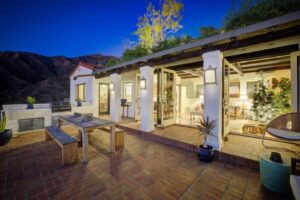How Malls Are Adapting to 21st Century Needs: A NY Developer’s Take
There’s no doubt online shopping is here to stay, so retail spaces are constantly reinventing themselves to stay relevant for their shoppers. The classic enclosed mall model is giving way to innovative, mixed-use developments that better serve evolving consumer preferences. Residents today seek more than just a shopping destination—they desire places that offer convenience and a diverse array of experiences. And town centers seem to be encompassing all these needs, blending multiple property types into cohesive, walkable communities.
In Buffalo, N.Y., two developers are about to transform a 1969-built mall into an urban-like environment that combines several types of spaces. As a response to contemporary consumer needs, Uniland Development Co. and Mountain Development Corp. are set to convert the former Eastern Hills Mall into a pedestrian-friendly space featuring more than 1,000 multifamily units, office and retail spaces, dining options, entertainment venues and lush outdoor areas.
Commercial Property Executive asked Uniland Development Co. Vice President of Marketing and Strategic Initiatives Carl Montante Jr. to expand on this project and touch on how malls in general are adapting to 21st-century needs.
What are retail developers and investors doing to restore malls’ appeal and provide an enjoyable shopping experience for clients?
Montante: Some malls are transitioning into vibrant lifestyle destinations called town centers, which are developments that seamlessly blend entertainment, dining, retail, office space, housing and recreation activities. This is a major conversion compared to malls as we know them—typically enclosed spaces with large anchor stores and smaller retailers.
Based on the changing landscape, the growth of online shopping and the shift of consumer desires, malls are now being reshaped into small urban villages with pedestrian-friendly features, outdoor gathering areas and a large variety of offerings, including entertainment, food, business services, events and sports activities that encourage visitors to remain and linger, enjoying themselves for extended periods of time.
READ ALSO: Mixed-Use Malls and the 15-Minute Neighborhood
Why aren’t traditional malls satisfying shoppers’ needs anymore? What stands behind developers’ and investors decisions to restore these properties’ appeal?
Montante: Retail data suggests that in-store shopping is still preferred. However, online shopping is continuing to increase, making the case that brick-and-mortar stores need to adapt. According to eMarketer’s forecast 2024 report, 20.1 percent of retail purchases are expected to take place online in 2024, up from an estimated 18.8 percent in 2023. As per Statista, online retail purchases are expected to hit nearly 23 percent by 2027.
It’s essential to understand what consumers are prioritizing and make adjustments to our current facilities to create new developments that offer unique experiences that appeal to people. For example, according to a National Association of Realtors report, 79 percent of respondents rate walkability as ‘very’ or ‘somewhat’ important, and 78 percent say they’d pay more for a home in a walkable community. This figure increases to 90 percent when looking at Gen Z and Millennial respondents. As for amenities, according to McKinsey, around 50 percent of U.S. consumers now report wellness as a top priority in their day-to-day lives, a significant rise from 42 percent in 2020. Statistics like these will help drive design and leasing decisions.
What type of new uses are being added to former malls?
Montante: With modern-day mall redevelopment, you’re seeing an influx of residential options, small businesses, wellness and health-care offerings and entertainment venues. These could include offerings such as breweries, spas, pickleball courts, outdoor theaters—all within walking distance to promote walkability, reduce car dependency and enhance quality of life.
You’re applying this model at Eastern Hills Town Center in Buffalo, the former mall in Western New York completed in the early 1970s. What are the top elements of this redevelopment that you believe will attract people?
Montante: One of the driving elements of this project is walkability. We want people to feel as if they are in a quaint village where they can park and then walk along beautifully landscaped, tree-lined streets on their way to a restaurant, work, the gym or a myriad of other destinations within this new master-planned community.
The project will offer a mixed-use, amenity-rich, highly landscaped environment within a village-like setting that results in a vibrant and welcoming setting throughout the day and evening. Additionally, more than 1,000 new multifamily residential housing units will include a variety of options, both for rent and for sale, that will make it feel like a community and add to its authenticity.
What’s the timeline for the various stages of this complex redevelopment?
Montante: Phase one is currently evolving based on demand. Upon full buildout, mall owners Uniland Development Co. and Mountain Development Corp. are planning 1,500 residential units, 1 million square feet of office and medical space, multiple restaurants, retail stores, hotels and several parks for outdoor events. Most of the site will be accessible within a 10-minute walk.
The concept plan illustration (above) is what could fit on the 100-acre site, but the final layout of the site will likely look different based on design innovations, tenant needs and market demand.
Restaurants within the town center will have patios offering views of lush landscaping and sidewalks as opposed to parking lots. Residents will be able to walk to the grocery store, park and ice cream shop and experience movies, concerts and other events. Office workers will be able to walk to restaurants, fitness centers and have access to numerous services like health care, child care and salons.
Redevelopments, particularly of this size, often come with a lot of challenges. What hurdles do you anticipate in redesigning this mall into a mixed-use space?
Montante: Infrastructure is a major consideration for a site of this size. We need to expand the existing sewer capacity to accommodate the new residential units, hotels and restaurants. To address this challenge, we are proactively collaborating with other agencies to develop a comprehensive plan that will meet the site’s current and long-term infrastructure needs, ensuring the project’s success.
Are there any sustainable practices or green building standards that you’ll be implementing?
Montante: Through every project, we look for ways to minimize the environmental impact of the construction and operation of the buildings in our portfolio, while also maximizing tenant comfort and financial savings. The new town center has plans to incorporate sustainable construction, renewable energy, water management techniques, reduced-energy lighting systems and other zero waste initiatives. Additionally, we are working with various agencies to incorporate a multi-modal transportation hub on the site.
What is your long-term vision for this mixed-use development once it’s fully operational?
Montante: Our mission is to provide the Buffalo community with a lifestyle hub and central gathering place that will enhance the quality of life for area residents and become a regional tourist attraction. To make it possible, we will continue to observe 21st-century consumer trends to tailor our development phases based on needs. In the process, we aim to contribute to the Buffalo community through creating a high-quality built environment and a positive economic impact, which will promote investment and job creation, generating a domino effect of ongoing success for community members.
The post How Malls Are Adapting to 21st Century Needs: A NY Developer’s Take appeared first on Commercial Property Executive.




